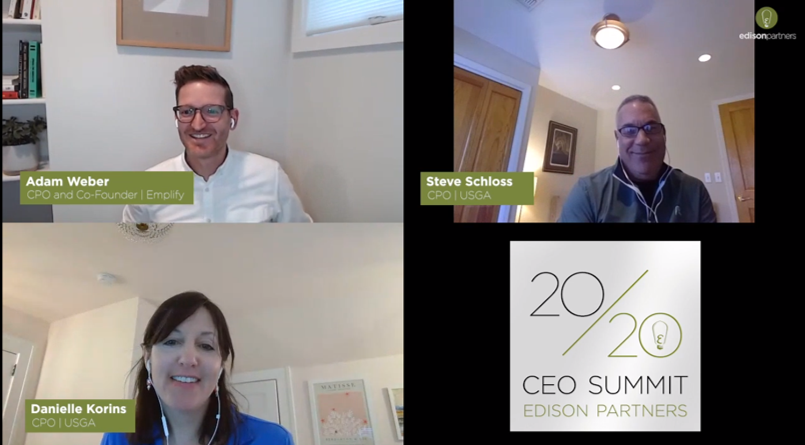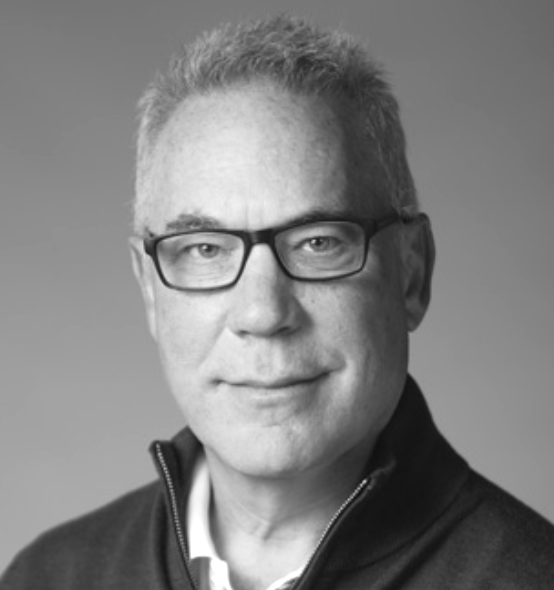Alignment, vulnerability, and flexibility are three words that created an unintentional thread tying together each session of Edison’s Ninth Annual CEO Summit in late November. Our session entitled Building Culture and Maintaining Employee Engagement: The CPO Point of View, moderated by Emplify CPO and Co-Founder Adam Weber with CPO panelists Danielle Korins (Sterling) and Steve Schloss (USGA), continued the theme of these words, putting them into the context of human capital management. The panel shared with our attendees the ways they evaluated their organizational culture and necessary changes when the COVID-19 pandemic hit, simple ways to engage their employees, and considerations that are top of mind heading into 2021.
The COVID-19 pandemic provided an unavoidable opportunity for organizations to assess their organizational culture and employee engagement and to remedy employee burnout, providing a crash course in understanding that having your employees working in the same building does not in and of itself create a healthy company culture. It is not created by a one-time statement of leadership’s vision - a strong culture requires an ongoing, conscious effort. It is created over time and must be cultivated.
Culture isn’t just how well your team gets along or how many team outings occur each year, it goes beyond friendly conversations at someone’s desk. Communication does not equal connection, and feeling connected isn’t just about conversations with colleagues. Connection is also about employees being able to link their work to the overall efforts of their organization and feel their contributions are valuable. Culture is the overall feel an employee gets as a part of your organization. A few questions to begin assessing your organization’s culture:
-
Is your leadership team or their team functioning as cohesive unit working to achieve common goals, or do they operate as a group of individuals working in the same department?
-
Do teams celebrate success and work effectively to improve as the business scales?
-
Do employees and their managers share an understanding and accountability of the value they create together?
-
Do employees understand how growth and development occurs in their role? In the company?
-
Do employees feel they have the support, freedom and opportunity to step outside their typical tasks and/or to put forth new ideas?
-
Is hard work noticed, is it acknowledged, is it rewarded?
-
Are employees connected to one another, or do they just communicate with one another?
A strong culture can transcend computer screens and be transmitted through the cloud. It’s not about swanky office buildings, it’s about people, about connections, and about the mental environment more than the physical. A strong culture should be able to remain strong despite a distributed workforce, as culture focuses on the human side of the transactions that keep your company running.
During the session, Adam touched on a key point (shown below) about company culture: it needs to be sustainable. That means it needs to be flexible, it needs to be adaptable. There must be alignment in thoughts and actions, a willingness to be vulnerable to make an honest assessment of that alignment, and flexibility to pivot when – and as often – as you need to in order to realign and achieve your goals.
Finding what works for you and your employees is imperative; the execution of workplace culture initiatives is not one-size-fits-all. Leading these initiatives with intent and an understanding of employee needs can lead to an enjoyable and desirable organizational culture. Some actionable advice from our CPO panel on how to bring the human side of your employees to the forefront, increase engagement, and cultivate a sustainable culture:
-
Create clarity. In an uncertain world, clarity creates a path to move forward.
-
Find ways to have a virtual version of a hallway conversation (embrace spontaneity).
-
We are all human. That includes the CEO and leadership team. It’s okay to share your personal side.
-
We all want to grow. Take the time to discover untapped talent within your employees.
-
Create an internal project board that creates opportunity for some while assisting those who feel overextended.
-
Create formal processes for interactions that encourage employee connection (for example, donut chats or short “get to know you” sessions).
-
Find ways to make operational meetings informative and productive by having executives join in to offer their insights while creating greater access.
-
Ensure everyone knows and understands the agenda and the relevant material for meetings (send agendas or pre-reads).
-
Connect employees based on personal interests or commonalities (parents, runners, readers, etc.).
-
When meetings end early, use the time to ask, “What is one good thing you’re working on right now?”
The final piece of advice from the panel that I’ll leave you with came from Steve, who says USGA meetings kick off with the question, “What word describes how you’re feeling today?” in order to provide context to each person’s contributions and is similar to Emplify’s red, yellow, or green mood check at the beginning of their meetings.
This simple task can be executed on a micro level in each meeting as well as on a more macro level in holistically assessing your organizational culture – if you’re willing to be vulnerable enough. Ask your employees to (anonymously) provide a word describing your current company culture. Then, if you dare, ask them to provide a word describing their ideal company culture. Is there alignment?
As you plan for a thriving organizational culture in 2021, ask yourself: are your operating plans flexible enough to achieve alignment between what you see as your organizational culture and your employees’ experiences and needs?
Click here to view the full Building Culture and Maintaining Employee Engagement: The CPO Point of View session with Danielle, Steve, and Adam.


